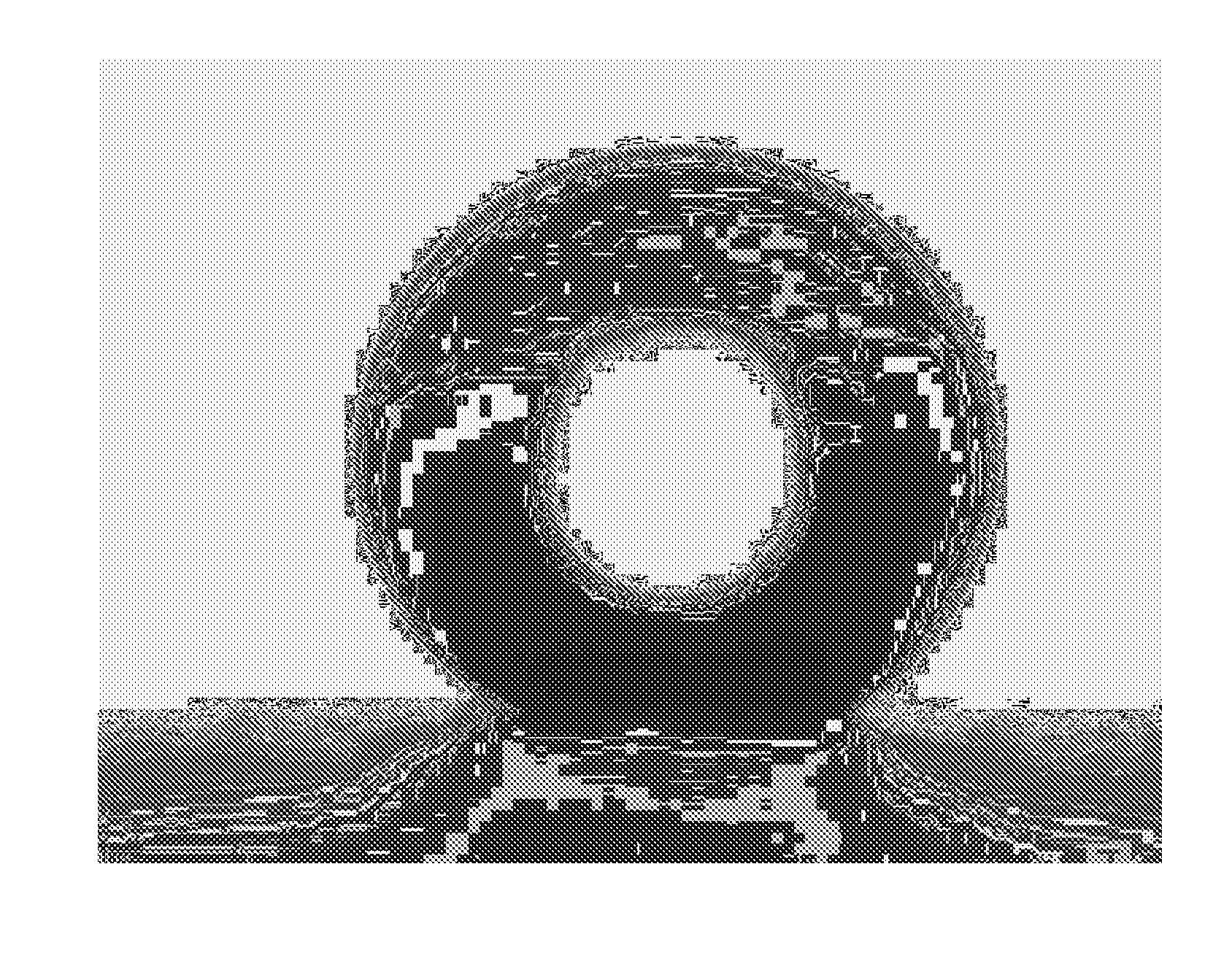Nano-structured surface and an in situ method for forming the same
a technology of nanostructured surface and in situ method, which is applied in the direction of liquid repellent fibres, natural mineral layered products, cellulosic plastic layered products, etc., can solve the problems of high cost, high cost, and high cost, and achieve moderate self-cleaning effect, good anti-corrosion performance, and good anti-corrosion performan
- Summary
- Abstract
- Description
- Claims
- Application Information
AI Technical Summary
Benefits of technology
Problems solved by technology
Method used
Image
Examples
example 1
Production of Cotton Fabrics with a Self-Cleaning Surface
[0022]A nano-structured surface was formed on a cotton fabric substrate. The substrate was treated with a mixture containing a silica precursor, a water-soluble catalyst and a low-surface-energy compound, and was then cured in the presence of ammonia. The silica precursor was methyltrimethoxysilane, the water-soluble catalyst was nitric acid, and the low-surface-energy compound was a fluoroalkyl alkoxysiloxane.
[0023]First, 2.5 ml of methyltrimethoxysilane was charged to 80 ml nitric acid solution (pH=2), and stirred for 10 minutes to hydrolyze the methyltrimethoxysilane. Fluoroalkyl alkoxysiloxane solution was prepared by dissolving 5 g of Dynasylan F8261, trademarked Sivento Silanes from Degussa, in 35 ml of ethanol. Then, 20 ml of fluoroalkyl alkoxysiloxane solution was introduced to the methyltrimethoxysilane solution to form a mixture, and stirred for 10 minutes at room temperature.
[0024]The plain cotton fabric substrate w...
example 2
Production of Cotton Fabrics with a Self-Cleaning Surface
[0027]A nano-structured surface was formed using the same method as described in Example 1, except that no silica precursor was present in the treatment mixture. The water contact angle recorded by the contact-angle meter on this substrate was 122 degrees. The lower contact angle relative to that of the surface of Example 1 was indicative of a lower surface energy for this surface. Thus, using methyltrimethoxysilane as a silica precursor enhanced the water contact-angle on the substrate relative to a surface prepared without the silica precursor.
example 3
Production of Cotton Fabrics with a Self-Cleaning Surface
[0028]A nano-structured surface was formed using the same method as described in Example 1, except that the low-surface-energy compound was provided in a commercial product from AGC Chemicals American Inc. (e.g. nonionic, trademarked AG-710, with 30% solid content by weight). The water contact angle recorded by the contact-angle meter on this substrate was 156 degrees.
PUM
| Property | Measurement | Unit |
|---|---|---|
| diameter | aaaaa | aaaaa |
| diameter | aaaaa | aaaaa |
| temperature | aaaaa | aaaaa |
Abstract
Description
Claims
Application Information
 Login to View More
Login to View More - Generate Ideas
- Intellectual Property
- Life Sciences
- Materials
- Tech Scout
- Unparalleled Data Quality
- Higher Quality Content
- 60% Fewer Hallucinations
Browse by: Latest US Patents, China's latest patents, Technical Efficacy Thesaurus, Application Domain, Technology Topic, Popular Technical Reports.
© 2025 PatSnap. All rights reserved.Legal|Privacy policy|Modern Slavery Act Transparency Statement|Sitemap|About US| Contact US: help@patsnap.com


